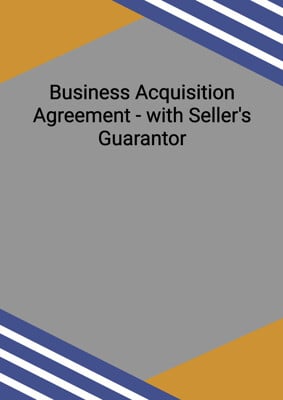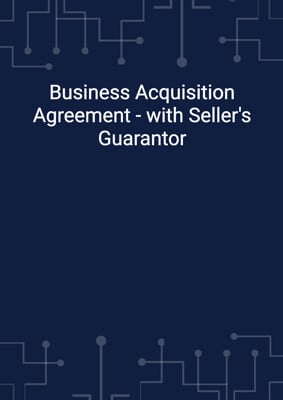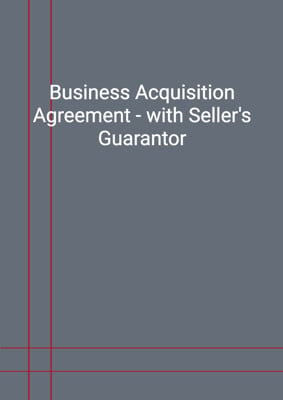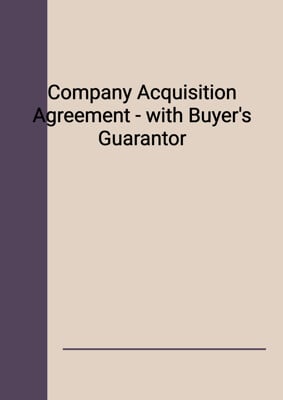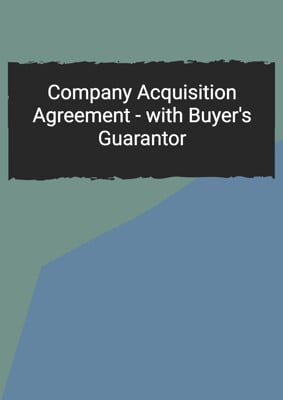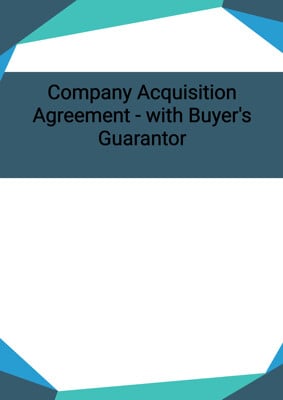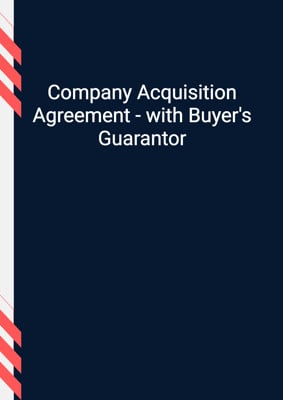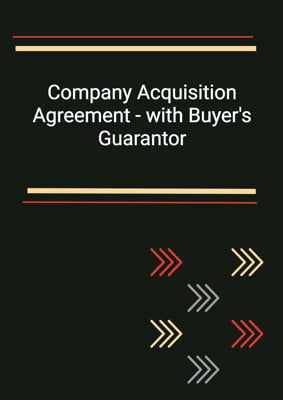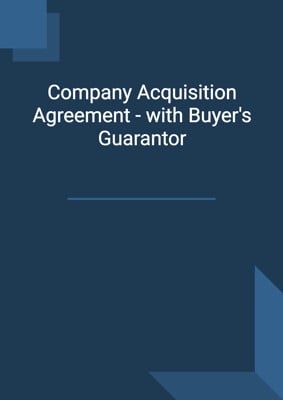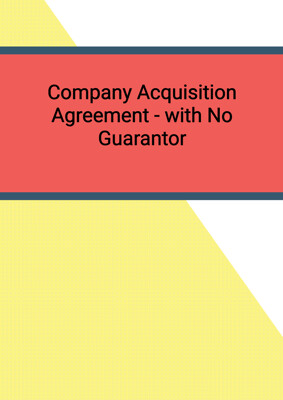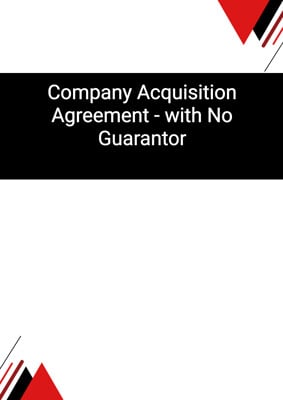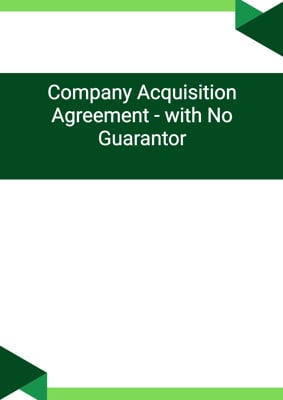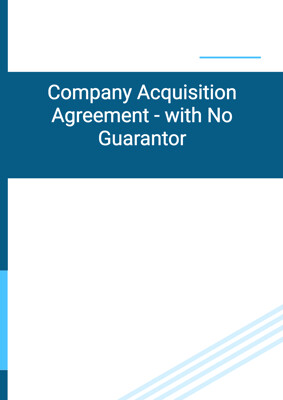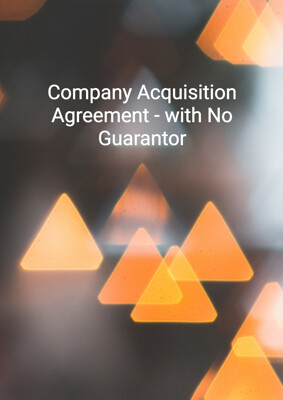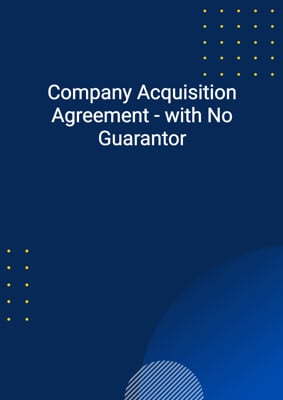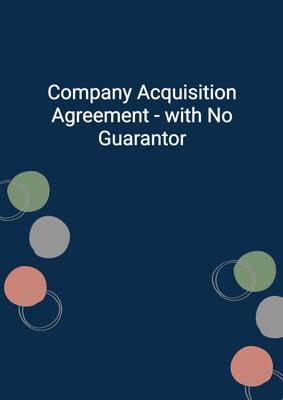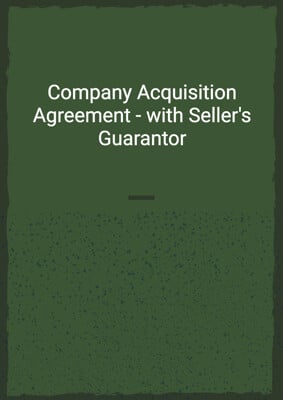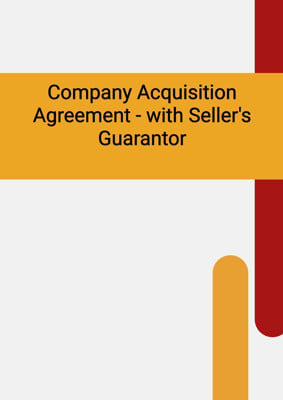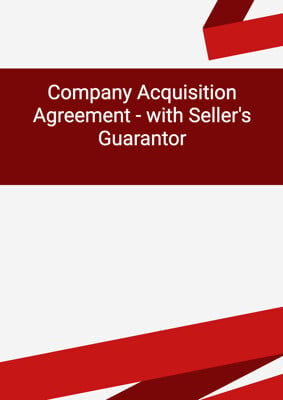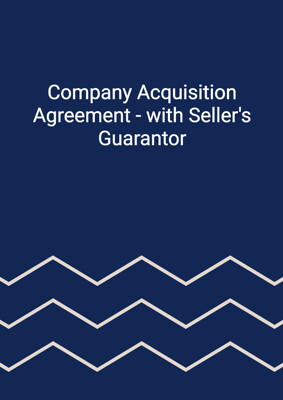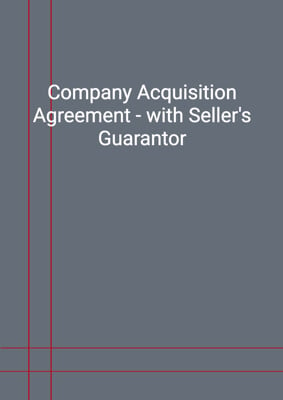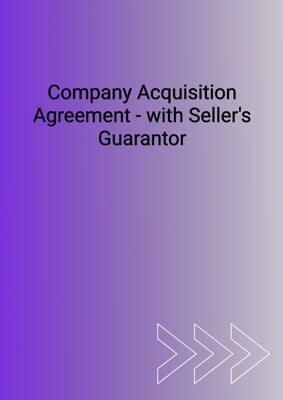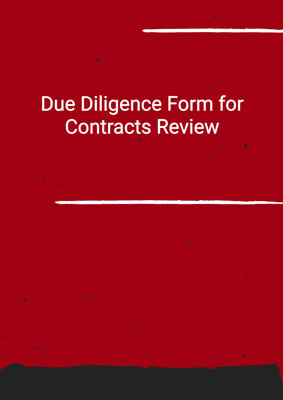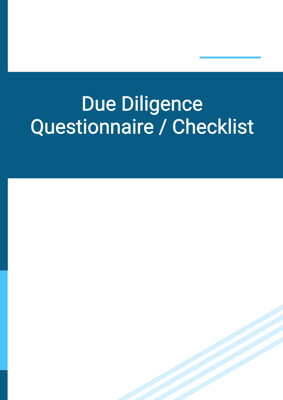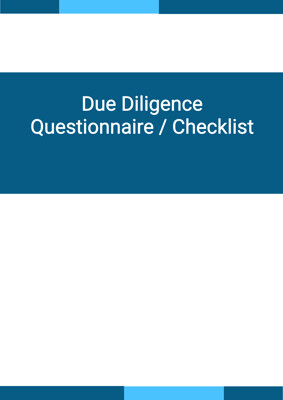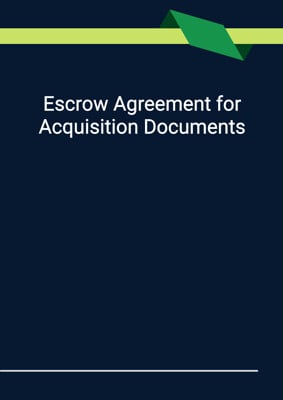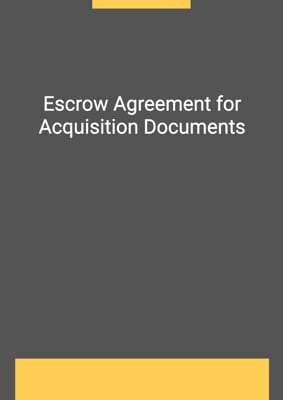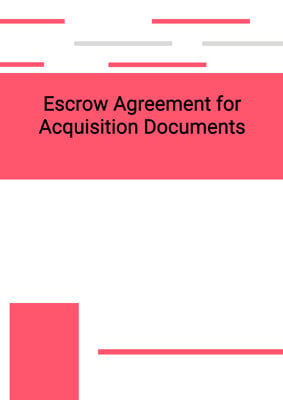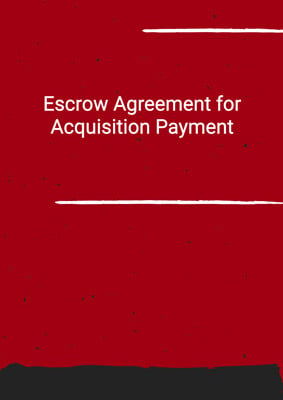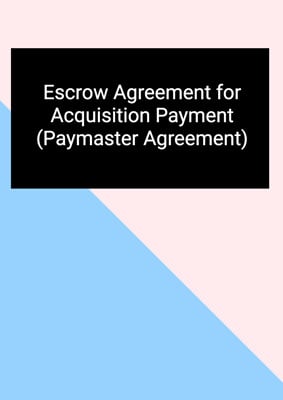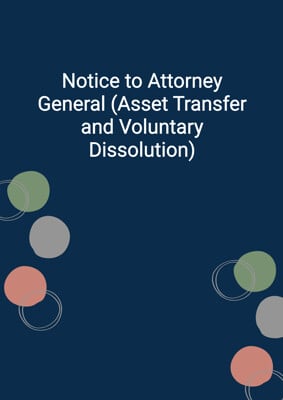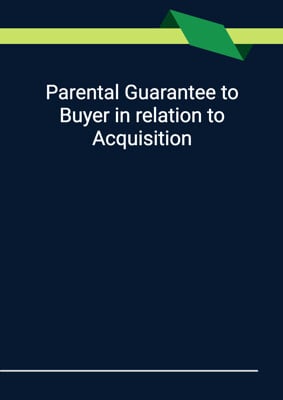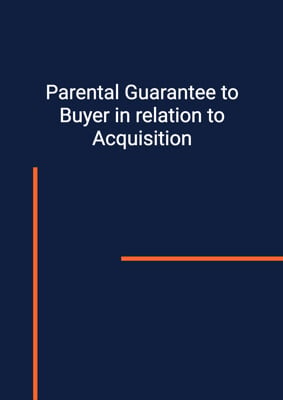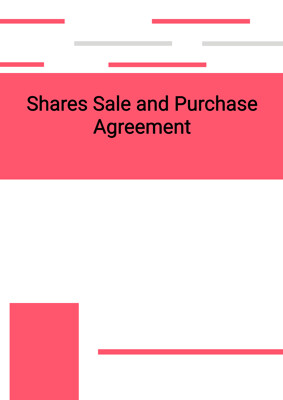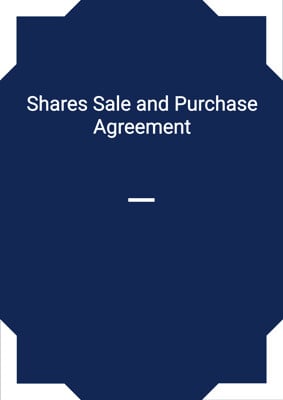
Acquisition Agency Agreement to Bind Parties to S&P Agreement
Buyer - Pre Agreement
Appointment of a local agent for the designated buyer in relation to an acquisition. The purpose of the agency agreement is to bind local buyers into the main agreement in relation to a multi-jurisdictional acquisition. This is drafted for the buyer and should be used before the execution of the main agreement.
How to Tailor the Document for Your Need?
01
Create Document
Fill in the details of the parties. You can click the "Fill with Member’s Information" button to complete it with information saved to your account.
02
Fill Information
Please fill in any additional information by following the step-by-step guide on the left hand side of the preview document and click the "Next" button.
03
Get Document
When you are done, click the "Get Document" button and you can download the document in Word or PDF format.
04
Review Document
The document should be signed by the authorised signatory (or directors of a company) and witnessed to complete the formality.
Document Preview
Document Description
The Acquisition Agency Agreement to Bind Parties to S&P Agreement is a document that establishes a legal relationship between two parties, namely the buyer and the designated buyer. This agreement is entered into in connection with the sale and purchase agreement (the principal agreement) for the sale and purchase of the target. The buyer, who is also acting as the agent for the designated buyer, agrees to comply with the obligations stated in the principal agreement.
The document begins with a brief introduction, highlighting the purpose and connection to the principal agreement. It then proceeds to define key terms and provide interpretation guidelines. The importance of compliance with the principal agreement is emphasized, ensuring that the designated buyer fulfills its obligations as long as the buyer is obliged to procure such compliance.
The agency relationship is established in section 3, where the designated buyer appoints the buyer as its sole agent. The buyer is authorized to enter into and perform the principal agreement on behalf of the designated buyer, receive or pay any amounts owed, initiate and settle claims, and undertake other acts and obligations as stated in the principal agreement. The designated buyer is responsible for providing funds and indemnifying the buyer for any costs incurred in relation to the principal agreement.
Section 4 addresses warranties and indemnities, stating that the designated buyer can only enforce its rights and benefits through the buyer's agency and in accordance with the terms of the principal agreement. Any variation to the agreement must be in writing and executed by all parties involved. The severability clause ensures that if any provision of the agreement is deemed invalid or unenforceable, it will not affect the validity of the remaining provisions.
The document concludes with provisions regarding counterparts, governing law and jurisdiction, and the exclusion of rights for third parties. It also outlines the requirements for giving notices and the addresses of the parties for communication purposes. The agreement is signed by the authorized representatives of both parties.
In summary, this Acquisition Agency Agreement is crucial for establishing the agency relationship between the buyer and the designated buyer in connection with the principal agreement. It ensures compliance, defines the roles and responsibilities of each party, and provides a framework for the enforcement of rights and benefits.
How to use this document?
Step-by-step guidance for using the Acquisition Agency Agreement:
1. Familiarize yourself with the purpose and connection of this agreement to the principal agreement for the sale and purchase of the target.
2. Ensure that you understand the definitions and interpretations provided in the document, especially those related to the principal agreement.
3. Emphasize the importance of compliance with the principal agreement, as the designated buyer is obligated to comply with the buyer's procurement.
4. Establish the agency relationship by appointing the buyer as the sole agent of the designated buyer, granting them authority to perform the principal agreement on behalf of the designated buyer.
5. Clarify the responsibilities of the buyer, including receiving or paying amounts owed, initiating and settling claims, and undertaking other acts and obligations as stated in the principal agreement.
6. Ensure that the designated buyer provides the necessary funds and indemnifies the buyer for any costs incurred in relation to the principal agreement.
7. Understand that the rights and benefits held by the designated buyer can only be enforced through the buyer's agency and in accordance with the terms of the principal agreement.
8. Be aware that any amendments or variations to the agreement must be in writing and executed by all parties involved.
9. Consider the severability clause, which states that if any provision of the agreement is invalid or unenforceable, it will not affect the validity of the remaining provisions.
10. Keep in mind that this agreement can be executed in multiple counterparts, and all counterparts together constitute one instrument.
11. Understand the governing law and jurisdiction provisions, which determine the applicable laws and the jurisdiction for any disputes.
12. Note that this agreement does not grant any rights to third parties to enforce its terms.
13. Follow the guidelines for giving notices, ensuring that they are in writing and served in the specified manner.
By following these steps, you can effectively use the Acquisition Agency Agreement to establish the necessary agency relationship and ensure compliance with the principal agreement.
Not the right document?
Don’t worry, we have thousands of documents for you to choose from:


















